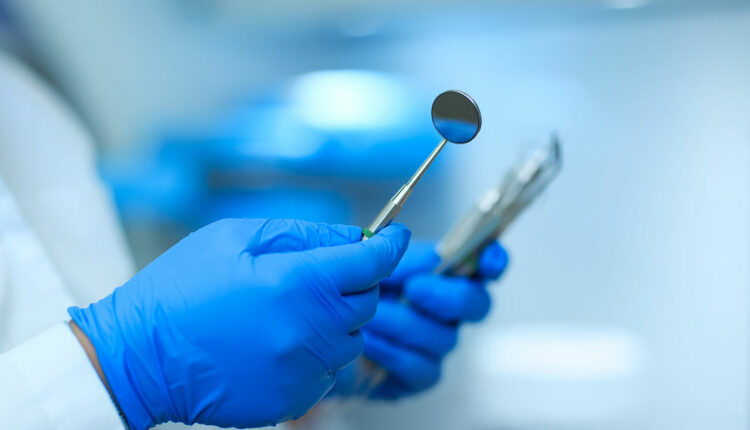
Insights Into Healing Phases and Tissue Adaptations of Crown Lengthening
Explore the intricate phases of healing and tissue adaptations post-crown lengthening procedures, delving into factors influencing gingival margin changes, optimal timing for final restorations, and the delicate balance between functional and esthetic considerations.
Following a crown lengthening procedures that apically position the flap after osseous reduction, the previous biologic width tends to reestablish itself. It is found that osteoblastic activity reaches its peak between the third and fourth week after osseous resective surgery. Soft tissue repair — including reestablishing the attached epithelium and connective tissue — begins 1 week postoperatively and reaches functional maturity between 6 to 9 months posttreatment.1–4
The healing phase can reveal the periodontal tissue’s positional changes, including the marginal gingiva, connective tissue attachment, and surrounding crestal alveolus. Often, the gingival margin’s positional change depends on the flap’s position to the osseous crest at the time of surgery. Pontoriero and Carnevale5 observed that if the flap is placed at the crestal level, the gingival margin’s postoperative rebound was approximately 3 mm. If the flap was placed at a more coronal level, less rebound was noticed for the gingival margin’s positional changes.5 Studies show many variables in altering the periodontal tissues and biologic width. Postoperative healing and maturation of the periodontal tissues after surgical crown lengthening involves bone remodeling in terms of density, with possible crestal height resorption and corresponding soft tissue changes in the form of regrowth, stability, or recession.6 Pontoriero and Carnevale5 reported significant coronal regrowth of the soft tissue margin at interproximal and buccal/lingual sites in patients with a thick tissue biotype, as opposed to a thin tissue biotype. Besides tissue biotype, other factors that may influence the healing process and impact the final position of supporting periodontal tissues include age, healing time, and the operator’s clinical skills.5–7
Brägger et al1 evaluated changes in the periodontal tissue complex immediately following crown lengthening and at 6 months postsurgery. They found that crown lengthening is a stable procedure, and the gingival margin does not move significantly after surgery. That is, the periodontal tissues can move over 6 months with minimal changes in the gingival margin levels.1 The team emphasized the need to delay margin placement up to 6 months in areas of esthetic concern following crown lengthening surgery.1 It is commonly accepted that 6 to 12 weeks of healing after crown lengthening are sufficient before the restoring dentist can place the final restorative margins and take the final impression for the functional or posterior restorations. For esthetic or anterior cases, 3 months is the minimal healing time for impressions and final restoration.
Clinical crown lengthening for functional purposes is often necessary to provide adequate retention and resistance form by gaining supracrestal tooth length and reestablishing the biologic width to prevent impingement of restoration margins on the attachment apparatus.8,9 Deas et al8 proposed that crown lengthening should optimally create at least 3 mm of tooth structure between the alveolar crest and future restorative margin to allow for proper restoration.
Prior to treatment, it is important to evaluate the supracrestal attachment at each site. This is generally accomplished with bone sounding, which helps determine a predictable postprocedural location for the gingival margin.
The surgical technique, either via gingivectomy or apically positioning the flaps, will depend on two critical factors: the underlying crestal bone, and width of the attached gingiva. Following surgery, clinicians must determine the optimal timing to place the final restoration. This decision is based on the final positional adaptation of the gingival margin, as well as restorative (functional and/or esthetic) considerations. As noted, the consensus is a minimum of 6 weeks of healing for functional purposes, and a minimum of 3 months for esthetic crown lengthening cases.6,9
References
- Brägger U, Lauchenauer D, Lang NP. Surgical lengthening of the clinical crown. J Clin Periodontol. 1992;19:58–63.
- Donnenfeld OW, Hoag PM, Weissman DP. A clinical study on the effects of osteoplasty. J Periodontol. 1970;41:131-141.
- Pennel BM, King KO, Wilderman MN, Barron JM. Repair of the alveolar process following osseous surgery. J Periodontol. 1967;38:426–431.
- Wilderman MN, Pennel BM, King K, Barron JM. Histogenesis of repair following osseous surgery. J Periodontol. 1970;41:551–565.
- Pontoriero R, Carnevale G. Surgical crown lengthening: a 12-month clinical wound healing study. J Periodontol. 2001;72:841–848.
- Abou-ArraJ RV, Majzoub ZA, Holmes CM, Geisinger ML, Geurs NC. Healing time for final restorative therapy after surgical crown lengthening procedures: a review of related evidence. Clin Adv Periodontics. 2015;5:131–139.
- Lanning SK, Waldrop TC, Gunsolley JC, Maynard JG. Surgical crown lengthening: evaluation of the biological width. J Periodontol. 2003;74:468–474.
- Deas DE, Mackey SA, Sagun RS Jr., Hancock RH, Gruwell SF, Campbell CM. Crown lengthening in the maxillary anterior region: a 6-month prospective clinical study. Int J Periodontics Restorative Dent. 2014;34:365–373.
- Pilalas I, Tsalikis L, Tatakis DN. Pre-restorative crown lengthening surgery outcomes: a systematic review. J Clin Periodontol. 2016;43:1094–1108.
This information originally appeared in Goel A, Mott DA, Wilkerson C, Ellzey AT. Concepts and considerations for surgical crown lengthening. Decisions in Dentistry. 2021;7(1):36–39.

